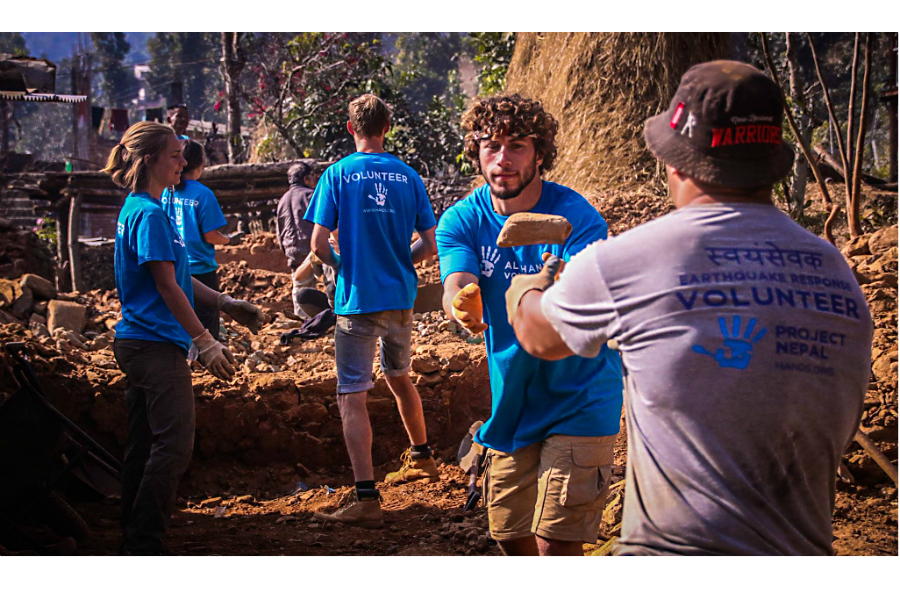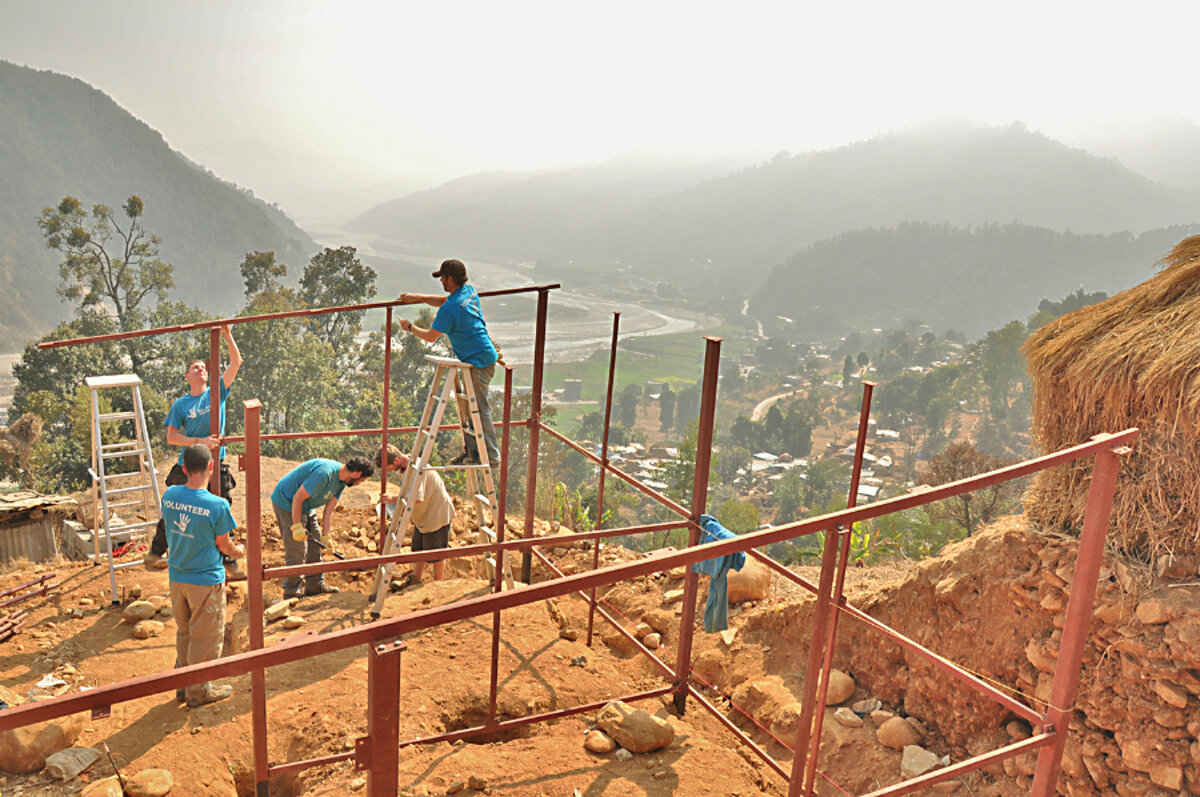One nonprofit's way of responding to natural disasters – more than 60 of them
| Boston
Teach, save, travel. It was a rhythm that brought “Jess UK,” as she still answers to, everywhere from her native Britain, to Taiwan, to finally Laos, where she found herself gritting her way through a muggy 10-hour bus ride.
“It was a great life,” she says today, but time for a change. She’d been searching for volunteering opportunities, but hindered each time by aid groups’ requirement that their disaster workers pay their own way.
Need in the region was still high, though, five years after the Indian Ocean tsunami, which ripped hundreds of thousands of families from their homes.
“I had time to give, but not a lot of money,” Jess Thompson says.
As she settled into her seat on the bus, however, two girls' conversation nearby caught her ear: something about All Hands Volunteers, where pitching in didn’t come with a price tag. Ms. Thompson scribbled the name into her damp palm, where, many miles later, she managed to decipher the half-melted note and made a once-in-a-lifetime call.
“Can I come?” she asked.
“Yeah, when are you going to be here?” came the answer from Indonesia.
It was her first project with All Hands Volunteers, a nonprofit that today has enabled more than 35,000 volunteers, from more than 100 countries, respond to more than 60 natural disasters around the globe. The places where volunteers have gone range from post-Sandy Brooklyn to Ofunato, Japan, after the 2011 tsunami – where the team restored not just houses, but thousands of water-damaged photos.
They’re the "Good (for Nothing) Club," as founder David Campbell says with a laugh: Volunteers pay nothing but their airfare and, technically, get nothing in return for their long days of hauling rubble, digging latrines, and figuring out what’s most needed – except, for many, an addictive sense of friendship, hope, and fulfillment.
Without volunteer fees, All Hands makes its budget work through a combination of grants, gifts, and partnerships, not to mention pared-down comforts – no air conditioning or nonlocal food, for starters. It spends less than 10 percent of its budget on administrative or fundraising expenses.
The organization got its start in 2004, when Mr. Campbell boarded a plane to Thailand after the Indian Ocean tsunami. He was equipped with little more than the urge to identify “obvious problems without obvious solutions,” and then create solutions. It was a knack he’d put to use in a four-decade career in tech entrepreneurship, which was then coming to a close.
What he saw in Thailand was inspiring, but also worrying. “People think of disasters as happening to countries, but they actually happen to villages,” he says. And those villages’ needs can differ wildly, as can the help that reaches them.
Often, assistance disappears soon after the news crews, whether in Fiji or New Orleans, go home. One year later, “Who’s here, and what are they doing? That would be a real picture of disaster response,” Campbell says.
The disaster aid field is trying to move toward long-term recovery and prevention, says Regine A. Webster, vice president of the Center for Disaster Philanthropy in Washington, which has partnered with All Hands’ current project in Nepal.
“What we really believe has been special about [All Hands] is, No. 1, their willingness to communicate in a very transparent manner about what they’re doing, why they’re doing it, how they’re doing it,” Ms. Webster says. Originally, most of CDP's funding for All Hands was designated for WASH funding – water, sanitation, and hygiene. But “then they came back to us after really understanding what the needs were, and they asked if they could reallocate part of the funding to build retaining walls,” she says.
By living bunk-to-bunk on local food, outside the main cities, and taking local trucks instead of expat SUVs, All Hands’ workers are also its eyes and ears, picking up on a community’s specific needs. In the Philippines, for example, they learned that a savings program for local workers would be just as useful as a training class.
“With All Hands, we have friendships in the community,” April Jelinek, a volunteer after the 2010 Haiti earthquake, told Campbell for a 2015 book about the group’s evolution. “We didn’t do something for Haitians,” added Ms. Jelinek. “We did it for Jean-Marc, Emanuel, Pierre and César.”
Like many volunteers, Thompson couldn't say goodbye. “At the end of the day, my body was tired – but my brain was on fire,” she says. Today, she’s All Hands’ US director of rebuild and recovery, managing flood relief in Louisiana, Texas, and South Carolina.
Then again, she had an extra incentive: her now-husband, whom she met when she showed him around on his first day on-site in Indonesia. As soon as their daughter begins to crawl, the next generation of the "Good (for Nothing) Club" will be in motion.
For Campbell, the most important rebuild isn't of homes or schools. It's of hope – not only that lives can be put back together, but that everybody has it in himself or herself to go and help.
A good Samaritan looks out for his or her neighbor, he says, but “it’s very different to help someone who’s totally disconnected from you ... picking yourself up, and going to Ecuador, and sleeping on a bunk, and working for two weeks just to dig out and start rebuilding a school for people you never knew and you’ll never know again.”
When someone’s home has fallen down, “it’s very straightforward,” Thompson says. “Piece by piece, with your own bare hands, you fix it.... How can you step away from that?”








